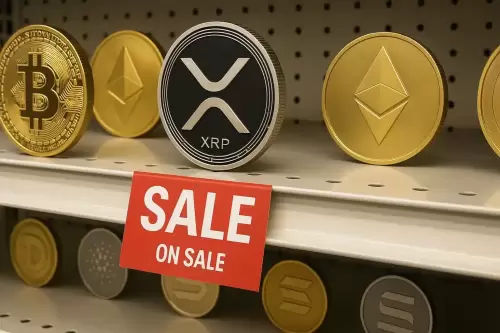 |
|
 |
|
 |
|
 |
|
 |
|
 |
|
 |
|
 |
|
 |
|
 |
|
 |
|
 |
|
 |
|
 |
|
 |
|

Author: samoyedscribes
Compiled by: TechFlow
Comparison of Token Launch Platforms on Solana, translated by TechFlow (original image from @samoyedccribes and SIGNUM CAPITAL)
A Brief History of Token Launch Platforms
Token launchpads have become an established space in the crypto ecosystem, providing a structured path for projects to raise funds and initiate liquidity. Prior to the meteoric rise of Pump.fun, this space was dominated by protocols that were more suited to Initial Decentralized Exchange Offerings (IDOs). Protocols such as CoinList, PinkSale Finance, and Fjord Foundry are the go-to options for projects launching on chains like Ethereum and Binance Smart Chain (BSC). These launchpads typically serve established protocols with dedicated builders, and they operate in a more selective manner, with investors needing to be whitelisted to participate in specific fundraisers. These barriers to entry make them less accessible to smaller protocols and less formal projects, such as meme coins or experimental tokens.
Why is Pump.fun so influential?
The emergence of Pump.fun has been credited by some for ushering in the era of Solana, and it was pivotal in propelling the chain to its dominant position. Launching on Solana, Pump.fun leveraged the blockchain's low cost and high-speed transactions to revolutionize token issuance. Unlike its predecessors, Pump.fun introduced a standardized mechanism to burn liquidity pool (LP) tokens at launch, ensuring that liquidity cannot be withdrawn—a feature that provides additional trust for retail participants, although the platform has not been entirely immune to manipulation by certain insiders.
Pump.fun is truly impactful due to its decentralized approach, allowing anyone, from smaller protocols to less formal projects, to engage in capital raising and liquidity generation in a fair manner. To date, over 10 million tokens have been launched on Pump.fun. This accessibility contributed significantly to the Solana memecoin craze, leading to Solana being recognized as the primary “on-chain casino.” Other chains have attempted to claim this title, but none have succeeded to the same extent. Pump.fun's model, the first of its kind, has enabled an unprecedented level of new token issuance.
However, is this a net positive or negative for the crypto space in the long run? On the plus side, Pump.fun lowers the barrier to entry, encouraging greater creativity and experimentation within the Solana ecosystem. But on the down side, it also opens the floodgates for lower-quality projects and large-scale liquidity extraction events, which some believe could be detrimental to the long-term health of the ecosystem. Only time will tell, as the markets will self-correct in due course.
Makenow.meme — Earliest iteration
After the success of Pump.fun, Makenow.meme emerged as an early competitor that aimed to take the concept a step further by integrating directly with platforms like X. The idea was to allow users to create tokens by tagging Makenow.meme’s X account on X, making token issuance a seamless, user-friendly experience. In theory, this looked like a promising decentralized application for the masses, combining social media with crypto innovation. However, despite its potential upside, Makenow.meme struggled to achieve product-market fit (PMF). The adoption of the platform was not optimal, leading to a rapid decline in user activity after launch. While the concept was novel, the execution and the incentives to drive mainstream adoption were lacking.
Pump.fun competitor resurgence
Pump.fun’s dominance didn’t last long. A pivotal moment came when Pump.fun decided to migrate its “graduated” tokens (tokens that reached a certain market cap threshold) from Raydium to its own Pumpswap decentralized exchange (DEX). The move sparked a wave of competition, and Raydium responded by launching its own token launchpad, LaunchLab. Additionally, Believe launched a Makenow.meme-like product that allows users to issue tokens on X, while Bonk also launched its own launchpad, based on Raydium’s LaunchLab technology stack. More recently, Boop entered the market under the leadership of Dingaling (founder of Pancakeswap, LooksRare, etc.).
Boop, the most promising rookie
Boop stands out for its innovative approach and "fun" Ponzi economics. Boop introduces a fee-sharing mechanism, a feature that solves a major problem of Pump.fun: the lack of incentives for token creators and early adopters. Boop also uses an active user onboarding strategy to attract users. It is worth mentioning that some core users of Solana DeFi received $BOOP airdrops, but there was a condition. They had to issue tokens, conduct marketing, and mobilize others to buy the tokens in order to claim the airdropped tokens. In addition, Boop provides fee sharing, airdrops, and other incentives for token deployers, $BOOP holders, and holders of recently “graduated” tokens. Still in its early stages, Boop's dynamic incentive structure and
免责声明:info@kdj.com
所提供的信息并非交易建议。根据本文提供的信息进行的任何投资,kdj.com不承担任何责任。加密货币具有高波动性,强烈建议您深入研究后,谨慎投资!
如您认为本网站上使用的内容侵犯了您的版权,请立即联系我们(info@kdj.com),我们将及时删除。
-

- Ruvi AI:百万富翁制造商的价格飙升了吗?
- 2025-08-03 02:00:59
- Ruvi AI将引起嗡嗡声,成为下一个潜在的“百万富翁代币”。发现其AI驱动的超级应用程序和战略预售如何导致巨大的收益。
-

- DOGE,公用事业硬币和聪明的钱:加密投资的新时代?
- 2025-08-03 02:00:23
- Doge的模因魔术褪色吗?聪明的钱正在注视公用事力硬币。发现为什么专家在不断发展的加密景观中从炒作转移到实质。
-

-

-

- Solana,Wewake和Presales:加密货币空间中有什么热?
- 2025-08-03 01:46:34
- 深入了解Wewake的创新预售以及整体趋势围绕着加密货币投资的未来的嗡嗡声。
-

-

-

- 比特币,加密货币市场和工作困境:导航纽约市的湍流
- 2025-08-03 01:43:06
- 看看最近的加密市场校正,战略的比特币积累以及经济不确定性的机构创新激增。
-

- 加密价格,XRP,智能购买:导航当前的市场格局
- 2025-08-03 01:33:48
- 现在是购买加密货币的明智时机,尤其是XRP吗?本文探讨了市场趋势,分析师见解和现实世界实用程序,以帮助您决定。



























































